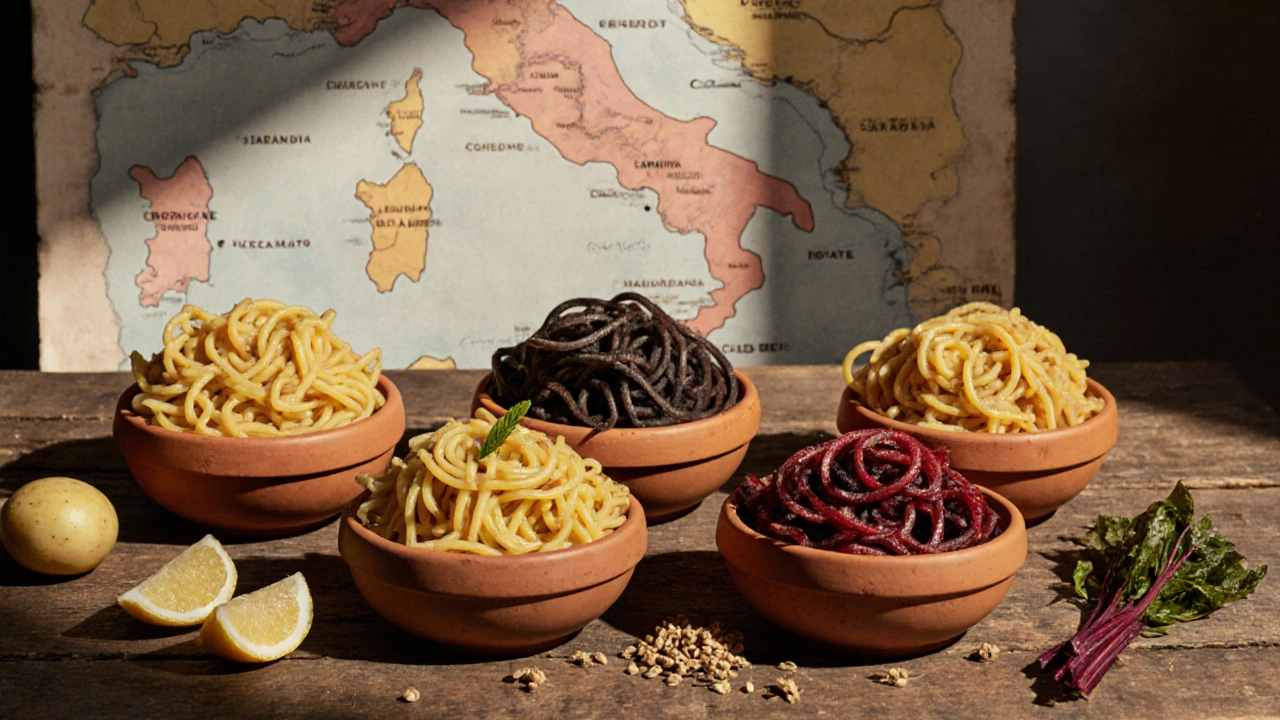Obscure Pasta Types
When working with obscure pasta types, less‑known noodle shapes that originate from specific Italian towns and are often made using centuries‑old methods. Also known as regional pasta varieties, they add unique texture, shape, and story to a dish.
If you’re hunting for obscure pasta types, you’re in the right place. These noodles aren’t just novelty; they’re a living archive of local agriculture, climate, and craftsmanship. Most of them are crafted from Durum wheat, a hard wheat that gives pasta its firm bite and golden color, ground into fine semolina flour. The high protein content of durum wheat creates a dough that can be rolled thin, extruded, or hand‑shaped without breaking, which is essential for the intricate ribbons of trofie or the knotted elegance of garganelli. Because the flour is milled close to the source, the flavor of the grain often reflects the soil it grew in – a concept that aligns perfectly with the school’s focus on seasonal ingredients. Understanding the grain’s role is the first step to mastering any obscure shape, and it sets the stage for the sauce pairings we’ll explore next.
How Regional Traditions Shape the Perfect Pairing
Every obscure noodle has a home in Italian regional cuisine, the collection of local food customs that dictate which shapes, sauces, and cooking methods belong together. In Piedmont, crescent‑shaped casunziei pair with butter‑sage sauce because the region’s cool mountain climate favors rich, comforting flavors. Down in Calabria, the tiny, spiral‑shaped orecchiette are traditionally tossed with broccoli rabe and anchovies, a marriage that balances bitter greens with salty depth. These pairings illustrate the semantic triple: Obscure pasta types influence the choice of traditional pasta sauces. Traditional sauces themselves—think ragù, pesto, or simple aglio e olio—are crafted to cling to the noodle’s surface, whether that surface is ridged, porous, or smooth. The sauce’s viscosity, oil content, and seasoning profile are chosen to complement the pasta’s texture, creating a harmonious bite. By recognizing the regional origin of a shape, you can predict the sauce that will showcase its character best, turning a simple dinner into a cultural experience.
Bringing these rare noodles to your kitchen also means embracing artisan cooking, the hands‑on approach that respects traditional techniques and seasonal produce. Artisan chefs often age the dough for 24‑48 hours, allowing natural enzymes to develop flavor before shaping. This pause also lets the gluten relax, making hand‑rolling or extrusion smoother and preventing breakage of delicate shapes. Seasonal ingredients play a starring role: a spring harvest of peas pairs beautifully with a bright lemon‑mint sauce for trofie, while autumn‑ripe pumpkins enhance the sweet, buttery profile of a baked ricotta‑filled dumpling. The triple Artisan cooking techniques preserve the texture of obscure pasta types underscores why you’ll want to follow the school’s step‑by‑step tutorials. Below you’ll find a curated selection of recipes, technique guides, and flavor stories that dive deeper into each rare shape, its ideal pairings, and the seasonal twists that make every plate unforgettable.

The Rarest Pasta in Italy - Discover Italy’s Most Elusive Noodles
Explore Italy's most elusive noodles, their origins, how to find them, and tips for cooking these rare pasta varieties at home.
More Detail